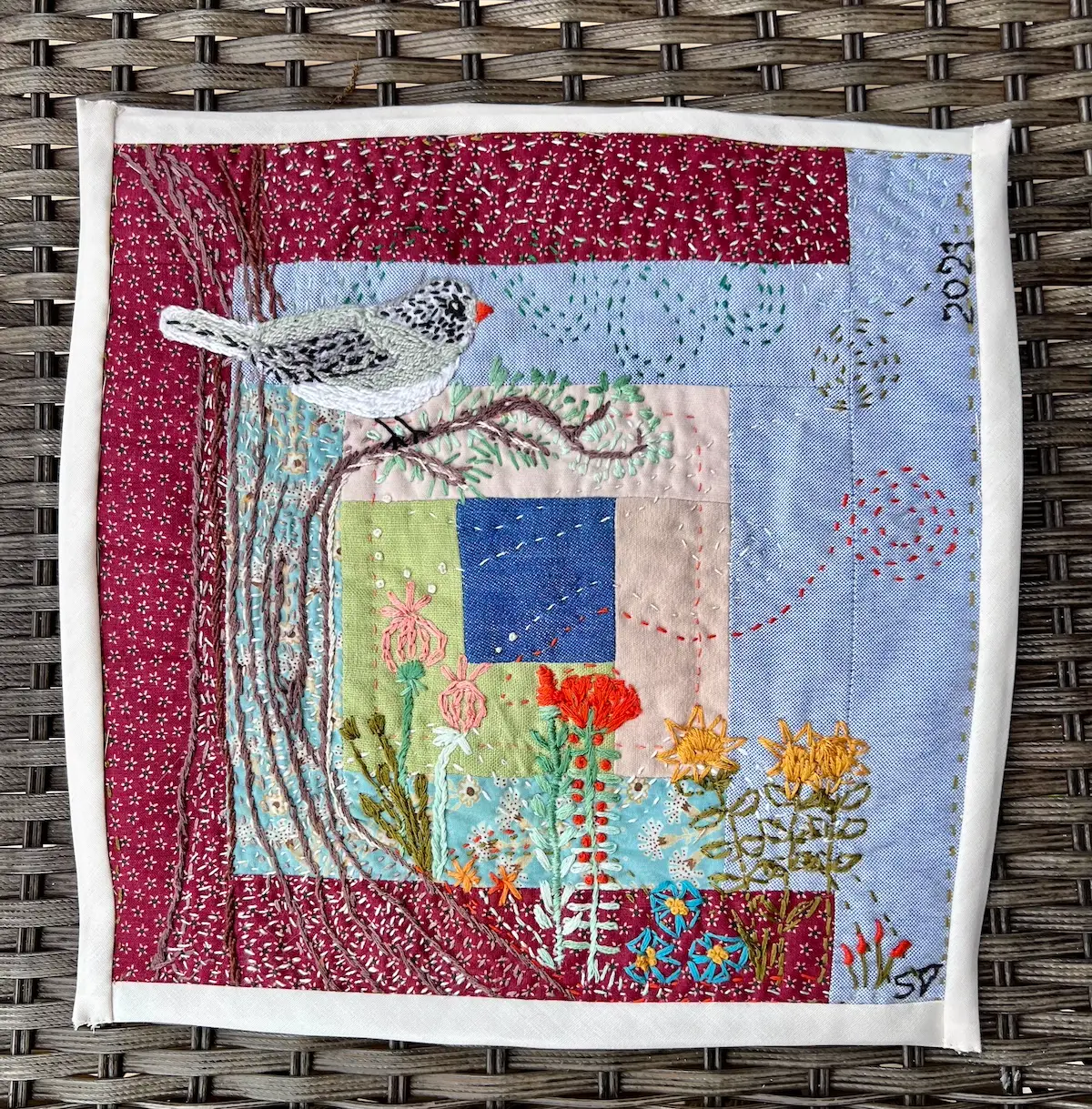From her early days learning crochet and embroidery to her deeply personal quilts made from repurposed fabrics, textile artist Susana Vizcarra stitches emotion and memory into every piece. Rooted in her Uruguayan heritage and inspired by life’s beauty and loss, her work blends texture, color, and storytelling in truly moving ways.
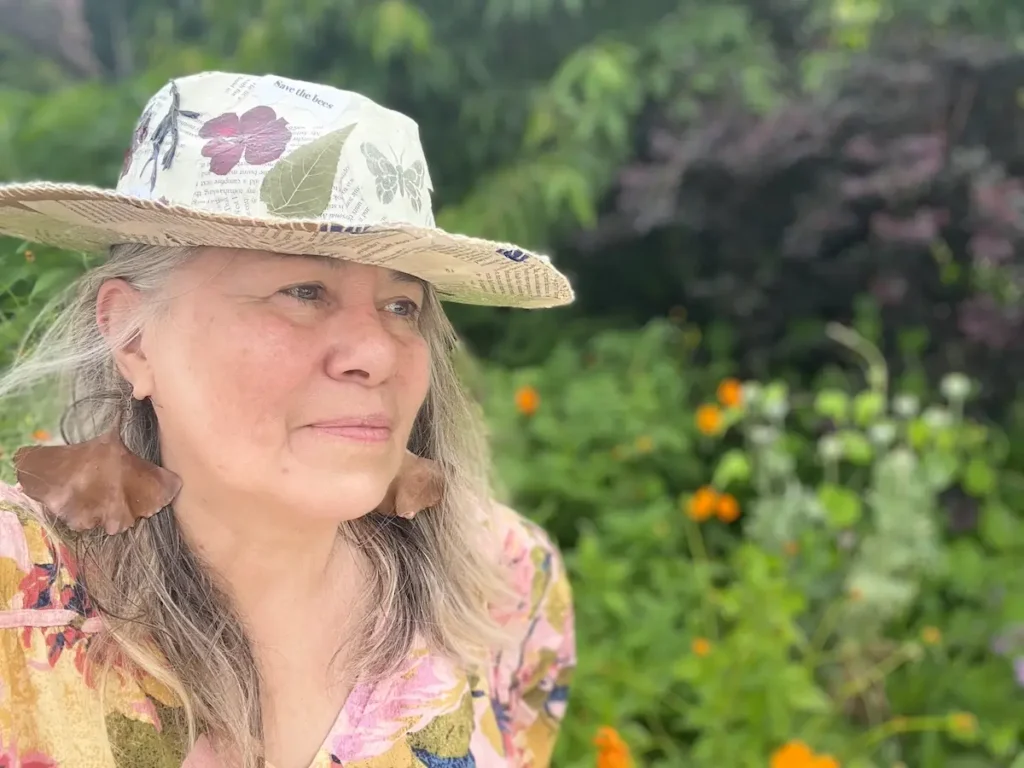
How and when did you realize that textile art (quilting, fabric collage, embroidery) became the form you wanted to explore?
I’ve always been creative and drawn to working with textiles. When I was around five years old, my grandmother taught me to crochet, and my mother taught me to knit.
At twelve, I took lessons with a professional embroiderer. I’ve always loved working with textiles—and sometimes paper or papier-mâché—creating sculptures and collages.
You were born in Uruguay and now live in Madison, Alabama. How did your move influence your creativity and making?
As an Amazon Associate I earn from qualifying purchases. Read more about our affiliate linking policy.
When I moved to the U.S. with my husband and two daughters, I immediately started taking lessons with a wonderful quilter and teacher in Oklahoma. I attended quilting classes for a year and learned a great deal.
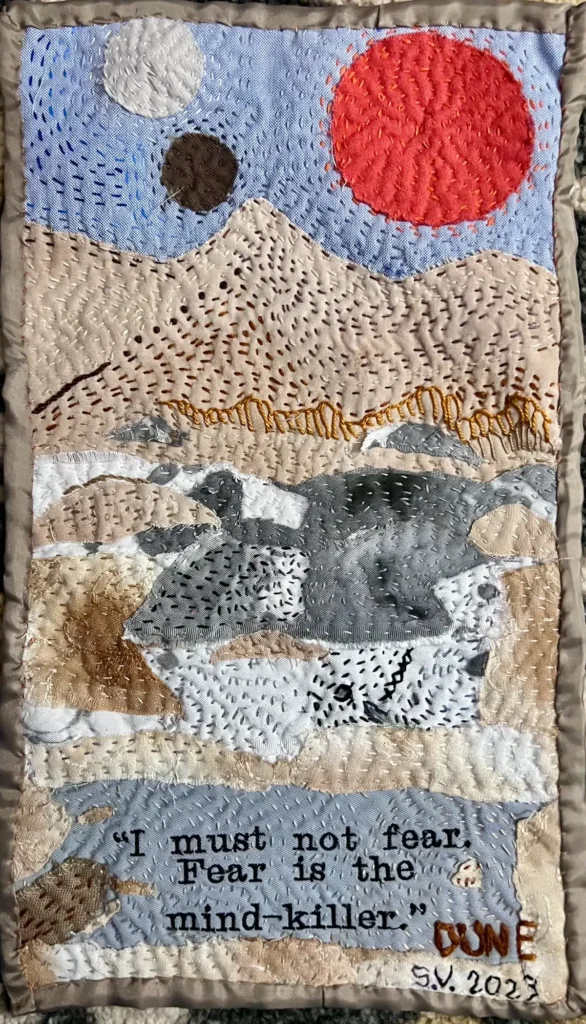
What role did your childhood, family traditions or cultural background play in shaping your creative voice?
My country has a long tradition of fiber and textile work. Uruguay is a major producer of wool, and this material was always accessible to me for creating and experimenting.
Where do you find inspiration for your designs?
My inspiration comes from my emotions, my love for the garden, and my daily life experiences.
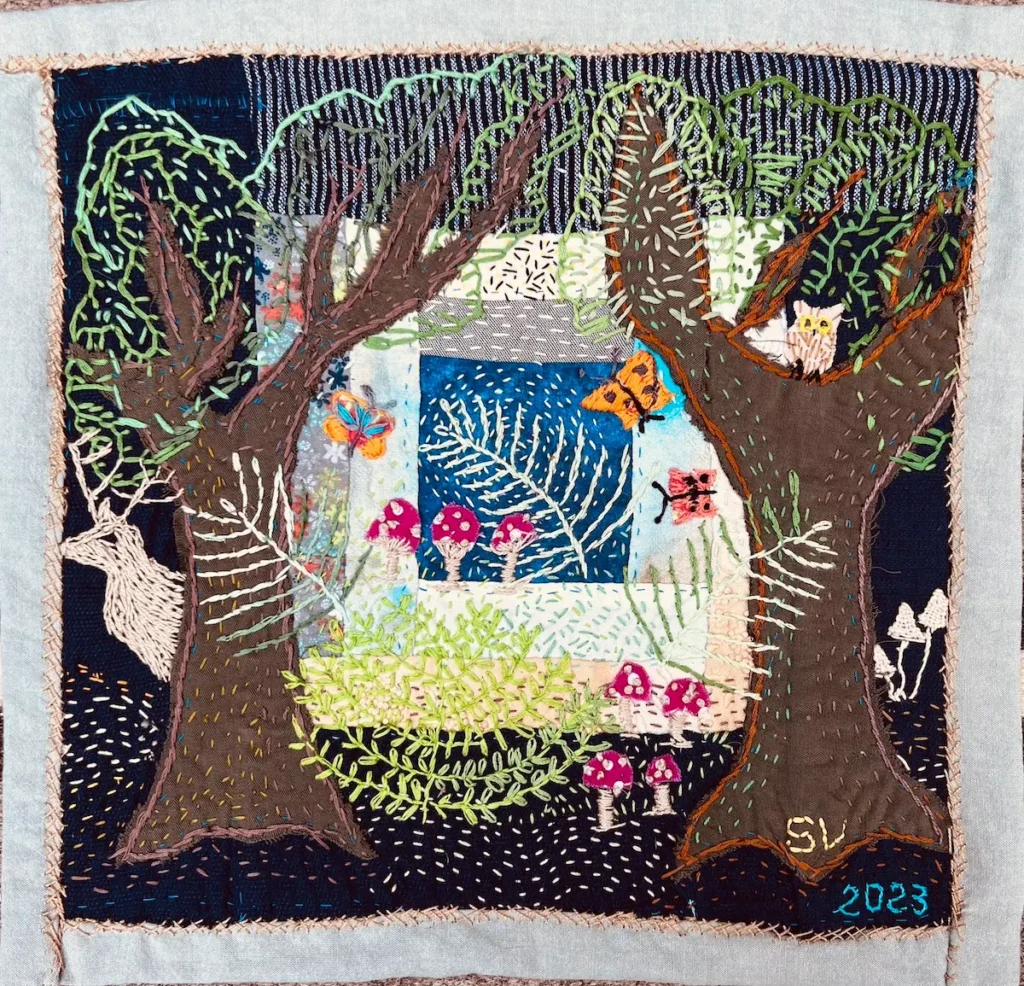
What draws you to working with found or handmade materials?
In 2018, my path took an unexpected turn with the loss of my youngest son, Fernando. In my grief, I was moved to create a quilt from his clothes. That process marked a significant shift in my artistic practice. Since then, most of my quilts have been made from repurposed materials.

How has grief or loss influenced your making and your creative voice?
As I mentioned, I had been quilting for a long time, but the quilts I made before Fernando’s passing were very different. My work has evolved to include a variety of techniques—quilting, embroidery, appliqué, and fabric collage. I also sometimes dye my own fabrics to create patterns that I envision for my work.
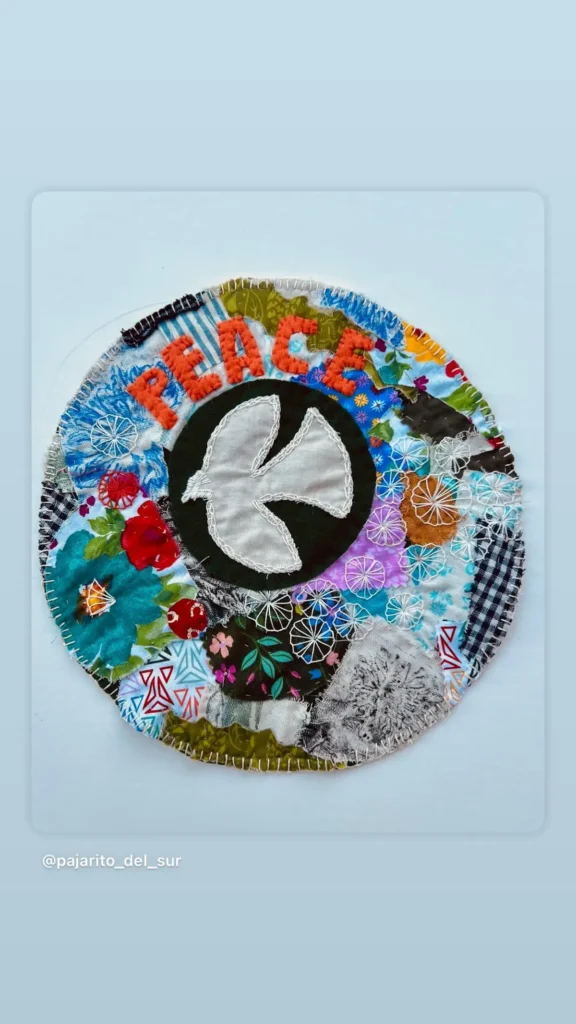
What’s the role of color, texture, and touch in your work? Do you approach fabric differently than you might approach paint?
When I work on a project, I feel as though I’m painting an image—creating a scene and telling a story through fabric. The difference between fabric and paint disappears for me in that process.
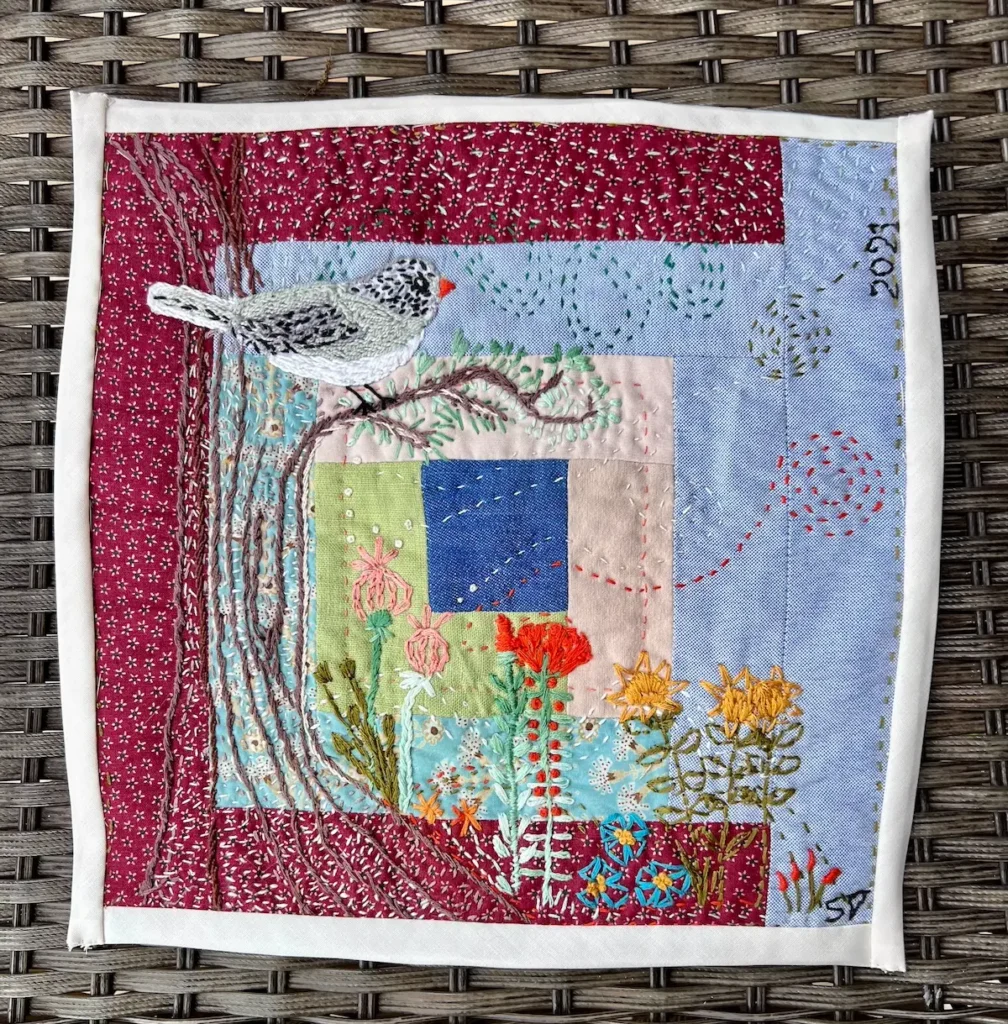
Describe your creative space.
I only need a few essential materials: needles, thread, scissors, and fabric. I usually work on my couch in the living room. I don’t have a fixed studio; my workspace moves with me wherever I feel comfortable—sometimes in the living room, sometimes in the garden.

How do you organize your fabric stash, your tools, your “ideas waiting to happen”?
I don’t organize my fabric by color or type. I usually keep a bucket of fabric pieces that I plan to use, and I limit myself to working with those. It helps me maintain control over my materials. I do the same with thread.
My artwork is divided into series—In Memoriam, Garden, Quotes, and Abstracts. I get inspired when I read a poem, visit a museum, or spend time in my garden.

How do you know when a piece is finished? Do you struggle to stop or know intuitively when it’s done?
I rely on my intuition to know when a piece is complete.
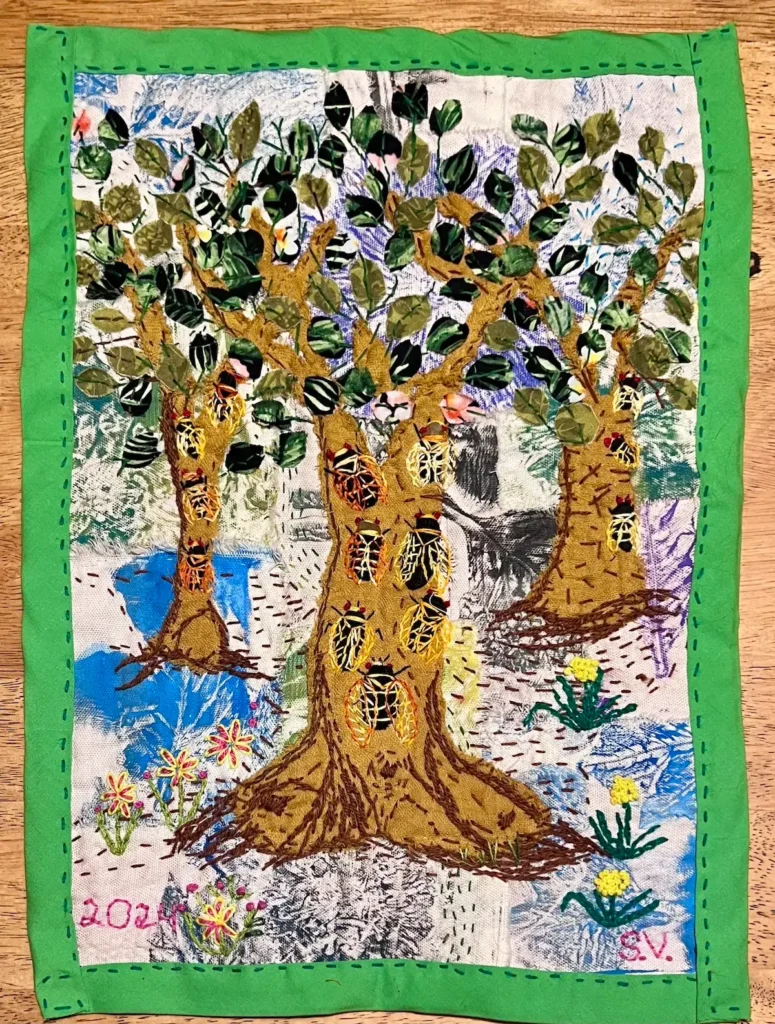
How much planning vs. spontaneous improvisation goes into your work? Do you sketch/plan or dive right in?
I usually start with an idea, but it depends on the project. I don’t often sketch or plan in detail, but I do thorough research when developing a concept. For example, last year, during the rare emergence of two types of cicadas, I wanted to create a textile piece about that event and learned as much as possible about them.

How do you nourish your creativity when you feel stuck, tired or uninspired?
I don’t pressure myself when I feel uninspired. Usually, I have more ideas than time to bring them to life. I keep a list of ideas for future projects—and so far, that list keeps growing faster than I can create.
What piece of advice would you give someone just starting in textile art and quilting?
Listen to your own voice, but also visit museums, learn about other artists, and research the subjects you wish to depict.

How do you measure success as an artist and maker? Has that definition changed?
I can only speak for myself, but I feel successful because I continue creating, have sold some of my work, and have shown my art in exhibitions. It has taken hard work and persistence to reach this point in my career. Some artists are lucky to gain recognition quickly, but for me, dedication and consistency have been key.
Where can people see your work?
I have a website, www.sivizcarra.com, which includes a gallery of my work. Currently, I have a piece in an exhibition and two more in an upcoming virtual show. You can find updates on my website or follow my work on Instagram: @pajarito_del_sur.
Interview posted November 2025
Browse through more inspiring hand embroidery on Create Whimsy.

